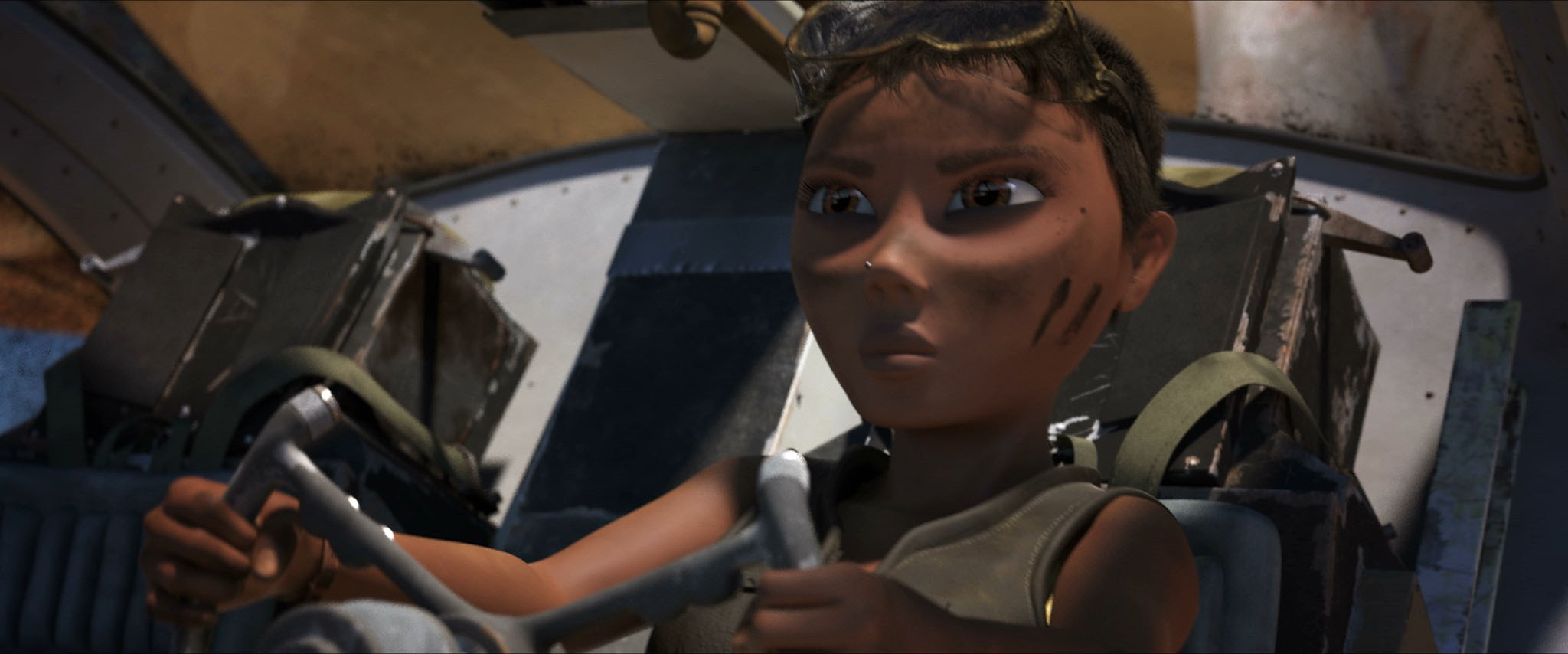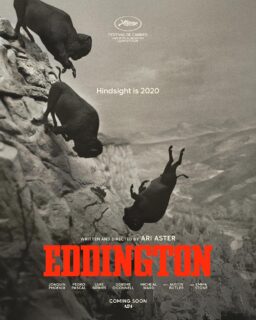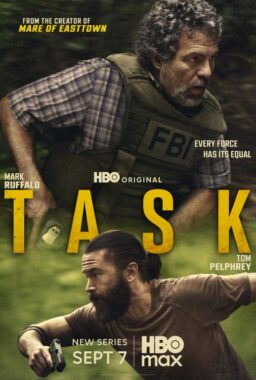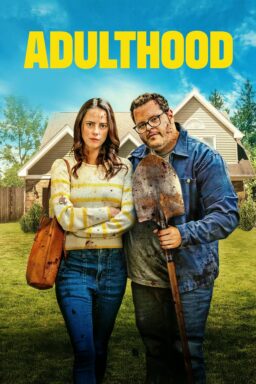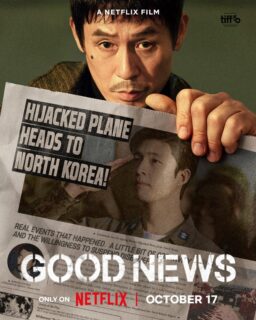“The
OceanMaker” is like a summer blockbuster in miniature. It accomplishes in 10
minutes what many bloated, over-blown franchise installments cannot accomplish
in 2-hours-plus. It creates its own world, puts the viewer in the cockpit along
with the main character (who never says a word) and gives a clear sense of
everything at stake. It plays with the action movie sub-genre of the Loner in a
Desolate Wasteland and follows it through with the kind of emotional climax
George Miller went for with “Mad Max: Fury Road.” It does all this under the
conviction of an environmental message about water preservation (a portion of
the proceeds for the film goes to EarthDay Network 2015 as part of The Canopy
Project, in which every purchase will help plant a tree), but it does not preach
or beat anyone over the head with an agenda.
The story
centers on Katrina, a lone fighter pilot who flies over the baron wasteland of
what used to be an ocean. A lighthouse stands among submarines and freighters
stuck in sand, the sun beating down on them mercilessly and with only a couple
clouds in the sky. It appears that rain has not fallen in quite
some time, but Katrina has created a machine that could get a rain shower going
again. All she needs is a cloud to fly over. She flips a few switches, drops
some yellow dye onto a cloud and suddenly, rain falls. Of course, it can’t be
that simple, as there are many cloud thieves out there who try to siphon water
from what few clouds currently exist (presumably to monetize it somehow). Aerial
dogfights ensue between Katrina and the water bandits over who will get control
of the clouds.

The
dogfight scenes carry a thrill to them that evoke Steven Spielberg at the
height of his abilities as a visual storyteller. Aside from a cheer, “The OceanMaker”
has not one single line of dialogue. It lets the emotions expressed on
Katrina’s face tell the bigger story while also perfectly underscoring the
importance of the events through action. Writer-Director Lucas Martell and his
team of animators and editors have clearly studied the best action sequences in
order to give a the viewer a perfectly realized geography of the dogfights. The
photorealistic animation gives the film a beautiful, tangible quality (when I
first saw the film, I had no idea it was animated until I saw Katrina’s face).
Martell also deserves special props for hiring a full orchestra to perform the
score instead of hiring one person to compose it digitally, a rare feat for a
short film.
“The
OceanMaker” makes for a great summertime diversion and a welcome relief for
those of us who curate short films for festivals and who rarely ever get to see
a full-blown action movie interrupt the steady stream of coming-of-age films
and dark, personal tales of woe. I also highly recommend Martell’s earlier
short film, the hilarious (and also wordless) “Pigeon: Impossible,” which was
written about a few years ago on this very site.
Q&A with LUCAS MARTELL

How did this idea come about?
Spoiler alert! Towards
the end of the film is a shot with the two planes flying straight at each
other with the cloud in the middle. I had that visual in my head for years
and always thought it was the climax to a great story, but I never knew what
the rest of the story was. One day I was playing around with the idea and
thought that perhaps the planes were fighting over the cloud… the idea of the
world without water and cloud harvesting came from that one image in order to
support this notion of a world where clouds are worth fighting for.
In one of your production videos, you said you had to bribe a bunch of
animators to come out to the Caribbean to work on the film. Why the
Caribbean? How long did production last?
There were 8 of us on
Caye Caulker in Belize for a month and a half. Animation can be done
anywhere, but I kept noticing that most of the life of a professional
animator is spent in windowless rooms in big cities. I knew that I wanted a
dedicated team of professionals working full-time on the project, not
piecemeal like most indie animated short films get made. We quickly realized
that we didn’t have enough to pay everyone their proper professional rates,
but moving the production to a tropical island turned the production from a
job into an amazing life experience that was too good to pass up. Ultimately
we finished about half of the film in Belize, which is insanely fast for
something this ambitious. The rest of it was done a little more piecemeal
over the following year, but the real groundwork was all laid on the island
during that artist retreat.
Talk a little about photo-realistic animation versus traditional
animation. Is the process harder, easier or about the same?
It’s not necessarily
harder, it’s just different. The decision to go more photorealistic was
primarily a creative one. We wanted the environment to feel tactile and
harsh, and a more photorealistic look really created that tone we were after.
You’ll also notice that we chose to make the characters geometrically
stylized, but with very realistic skin and surface details. That helped fit
them into this realistic world, but also gave us more range for the animators
to work with and helped avoid the uncanny
valley. (that’s a wikipedia link)

You went above and beyond what most filmmakers would do for a short
film with regards to the music by hiring a full orchestra rather than doing
everything digitally. Why was having that organic sound so important to you?
Without dialogue, the
music is really the narrator of the film, and even in the first draft of the
script I envisioned the last half of the movie being nothing but music… not
even sound effects. Because it was so exposed, we knew that we had to knock
it out of the park. Plus, I was a music major (saxophone) in college, so
music is something I lean very heavily on as a storyteller. The composer
Chris Reyman is a former roommate of mine who has scored all of my projects,
and we agreed that doing the score digitally would really limit the range of
what he could write. Fortunately we’ve got a lot of very good musician
friends, so between ourselves and our music supervisor Shelly Eager we were
able to pull some favors to make it happen with real musicians.
I saw this film before I saw Mad
Max: Fury Road and the comparisons now seem inevitable with the world you
created and the idea of the hero being female, which for a time was atypical
for this genre. What did you think of George Miller’s Mad Max films (if
you’ve seen them) and is there a direct influence here? Or perhaps another
action director?
I LOVE “Fury
Road” and the originals were definitely a stylistic influence,
especially for that “junk-punk” aesthetic. We started the project in 2012 and
started playing film festivals in 2014, so “Fury Road” wasn’t even
announced until we were well into production. The one major difference was
that we said from the beginning that we wanted to do a post-apocalyptic film
about hope. It’s still a little bit dark, but unlike most films in the genre,
it’s not about survival. It’s about trying to fix this enormous problem that
seems insurmountable. With all the environmental issues we’re facing, it’s
very relevant, yet still tells that story in a fun, action-filled way that
doesn’t hit people over the head.
It was such a thrill to see this on the big screen at the Chicago
Critics Film Festival. What has been the highlight(s) of your festival
experience so far with this film?
The festivals have been
great, especially the Chicago Critics Film Festival. Probably the biggest
highlight for me was that we were invited to screen the film at Pixar.
Showing it to many of the people who invented computer animation was a dream
come true, and to see how they responded to the story was amazing.
What’s next for you?
There’s several projects
in the hopper, but the most relevant one is a feature version of “The
OceanMaker.” I’ve already written a pretty detailed treatment that picks
up where the short leaves off, following the little girl in the lighthouse
who eventually becomes “The OceanMaker.” We’re just trying to put together
the necessary pieces to make that happen.
The OceanMaker from Mighty Coconut on Vimeo.
After the seas have disappeared, a courageous pilot fights against vicious sky pirates for control of the last remaining source of water: the clouds.
The bulk of the film was made using nothing but laptops during a 7-week artist retreat on a small caribbean island. Be sure to check out our behind the scenes videos at the bottom of its Vimeo page.

